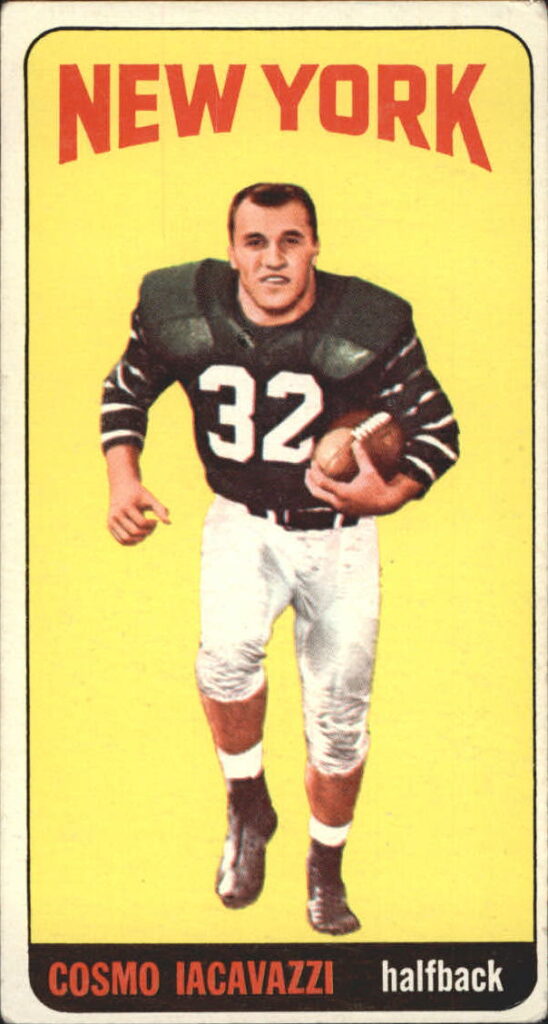Along with Rutgers—its opponent in the first intercollegiate football game—Princeton has the oldest football program in the country, dating back to 1869. During the late 19th and early 20th century, the Tigers claimed more than 20 national championships, which remains a college football record. In 1876, Princeton was at the forefront if the sport’s first organization, the Intercollegiate Football Association. In 1878, Woodrow Wilson co-directed the Princeton College Football Association and the team went 6–0. Princeton was also a pioneering force in dangerous mass plays, introducing the murderous V formation, which cut through enemy defenses like a spearhead.

Among the school’s stars in the 1800s were Hec Cowan, John Haxall, Alec Moffat and Snake Ames (right). Cowan was a large, agile lineman considered among the best of his era. Haxall was a powerful kicker who once drop-kicked a 65-yard field goal. Moffat and Ames have been credited with perfecting the spiral punt. Then there were the six Poe brothers, all sons of Maryland Attorney General John Prentiss Poe and cousins of the poet Edgar Allan Poe. Edgar’s namesake was an All-American quarterback in 1889. Younger brother Arthur also earned All-America honors, and saved his best games for Yale in 1898 and 1899.
A few years later, lineman John DeWitt distinguished himself as one of the nation’s best all-around players. Sanford White, Eddie Hart and Hobey Baker also starred for Tigers during the pre-WWI era. Baker is best remembered as a hockey star, but he was one of the most fearless and dynamic football players in America. At a time when teams exchanged punts far more often than today, Baker specialized in catching kicks on the dead run and tearing through opponents with no regard for his personal safety. He made many thrilling runs during his Princeton career.

Princeton’s teams in the 1920s were coached by fiery Bill Roper and starred Stan Keck (left), Don Lourie, Ed McMillan, Ken Smith and Jack Slagle. The Tigers were known for their stifling defense during this era. The 1922 team went undefeated for the first time since 1903. In the mid-1930s, Princeton won 25 of 26 games during one impressive stretch, with perfect seasons in 1933 and 1935. The senior-heavy 1935 squad ranked among the finest ever. During the war years, the Tigers found it difficult to mount succesful teams, although they did have a number of talented two-way players, including Bob Perina, who made his mark in the pros after a stint in the service.
After World War II, Charlie Caldwell coached Princteon in the final years before the formation of the Ivy League. He installed a complex offense that highlighted the talents of players like Jack Davison, Bradley Glass and Dick Kazmaier. Kazmaier, an undersized back who ran, passed and kicked with incredible precision, led the Tigers to undefeated seasons in 1950 and 1951, and won the Heisman Trophy in 1951. He was a unanimous All-American both years. Between 1949 and 1952, Princeton won 24 games in a row.

In 1955, Princeton and seven other elite schools formed the Ivy League athletic conference. Members agreed to eschew postseason bowls, and essentially removed themselves as a group from national championship consideration. The Ivy League title would now be the brass ring at the end of each season. Princeton won the Ivy League crown in 1957, tied with Dartmouth in 1963, and won it again in 1964. Dick Colman’s ’64 squad, which went 7–0 in league games and finished 9–0 overall, was led by All-American running back Cosmo Iacavazzi (right).

During the 1970s, Princeton went through something of a down period. However, it was in the early part of the decade that Hank Bjorkland established a new school record for rushing yards with 2,362. Bjorkland went on to play in the NFL. During the 1980s, the Tigers’ most memorable game was a 35–31 win over Yale in 1982. Quarterback Bob Holly set an Ivy League record with 501 passing yards. Holly threw four TD passes and ran for a fifth on the last play of the game. Princeton hadn’t beaten Yale since the 1960s. The Tigers’ best defensive player during the 1980s was Dean Cain (left), who would go on to play Superman on television. He set a league record with 12 interceptions in 1987.
The 1990s saw more record-breaking Princetonians take the field. Mike Lerch set a Division I-AA mark with 370 receiving yards in a 1991 victory over Brown. Keith Elias set a school record and earned All-America honors with 1,731 rushing yards in 1993. In 1995, the Tigers beat Dartmouth on the last play of the season to win its first outright Ivy title since 1964. The following season, Palmer Stadium—the team’s home for more than eight decades—was demolished to make room for Princeton Stadium.

In recent years, Princeton’s top performer was Jay McCareins (right). He made key plays in victories over Harvard and Penn to end long losing streaks, and was named a First-Team All-American—a rarity for an Ivy League defensive player.
The 2013 Tigers, coached by Bob Surace, specialized in dramatic comebacks, erasing deficits to beat Harvard, Yale, Penn and Brown. In the final game of the season, however, Princeton could not overcome a three-touchdown differential and lost 28–24. The loss cost the Tigers the undisputed Ivy League title, which it had to share with Harvard. It marked the 10th time Princeton either won or shared this honor.
Surface led the varsity to shared titles in 2016 and in 2021, but Princeton won the Ivy League outright in 2018 with an unbeaten season. The team’s star was quarterback John Lovett, one of the school’s greatest all-around players. Lovett went on to play tight end and fullback in the NFL.